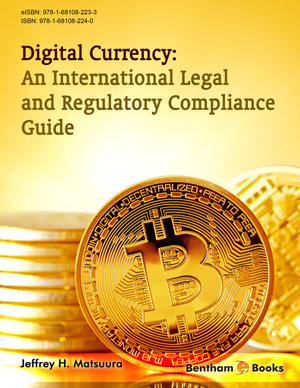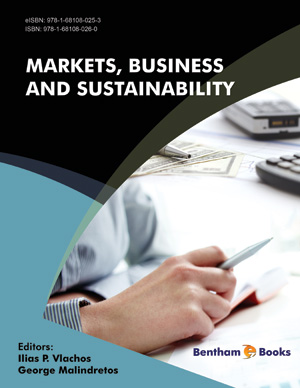Abstract
The global environmental crisis has caused growing attention worldwide. The hot issue of climate change is one of the most serious issues. “Research on CER in China” is of great importance for the enterprises to maintain sustainable development for the government to control environmental deterioration and for the public to attend harmonious society. System and Dialectical Science (SDS) is the perspective of this research. With the basic views of systematic point, progressive point and time and space point, and the basic rules of the organization emerging-law and difference cooperating law help us study Corporate Environmental Responsibility (CER) in a more comprehensive and dynamic manner. There are 10 chapters in this book. Based on the literature review, this research tries to analyze the element, structure and function of CER in China. After the in-depth discussion of environmental pollution and responsibility in China, it focuses on the systematic method and makes empirical analysis of CER in 30 Chinese enterprises. Finally, it puts forward the suggestions for CER improvement in China. The research methodology includes historical analysis, comparative analysis and empirical analysis. The questionnaire investigation and environmental performance of 30 heterogeneous enterprises have been analyzed, the ranking of 30 enterprises was obtained and an important reference for the evaluation index of the enterprise environmental responsibility was put forward. To establish the trinity of government, business and the public set up, collaboration will be the countermeasure. As an essential aspect of Corporate Social Responsibility (CSR), CER is expected to make further improvement in the future.
Literature Review: Theory and Evolution of Corporate Social Responsibility
Page: 16-37 (22)
Author: Wang Hong
DOI: 10.2174/9781681086477118010004
Abstract
The discussion on Corporate Social Responsibility (CSR) has evolved from the classical concept into the modern one of CSR. Many scholars, such as Bowen, Carroll, Frederick, Drucker and Wood, have contributed various viewpoints to define it. It has gone beyond the previous business scope and transferred to the responsibilities of stakeholders, concerning shareholders, employees, consumers, communities, customers, government, etc. The moral constraints are essential for the business operation in globalisation. It is not only the business operation philosophy, but also the management evaluation system constraining the internal enterprises, including the business partner behaviour. It not only highlights the technical progress for seeking profit, but also shows concern for the people, environment and the influence on the society in the process of production. With the social and economic development and the corporate boundaries expansion, enterprises will pay more attention to stakeholders. Corporate Environmental Responsibility (CER) is defined such that enterprises take into account their own behavior on the natural environment and adopt a responsible attitude to reduce their own negative externalities down to the possible level with the aim at becoming “resource saving” environmental enterprises in economic activities. CER has been an important aspect among the well-known theories: the notion of sustainable development, the theory of social contract, legitimacy, stakeholder, circular economy and externality, etc. Undoubtedly, CSR is a very extensive topic. CER is the core. Through literature review, the evolution progress is clearly visible, when the enterprises change from “economic man” to “social man” and to “environmental man”.
Low Carbon Economy: Climate Change and Corporate Environmental Responsibility
Page: 38-61 (24)
Author: Wang Hong
DOI: 10.2174/9781681086477118010005
Abstract
The earth’s climate are being changed unprecedentedly by the greenhouse gases. Since UK firstly proposed the idea of low carbon economy, various interpretations have been given by international and national scholars concerning the low carbon economy definition, achievement possibilities and market values, etc. Although they are different in the perspectives and concepts, one thing is the same: clean, healthy and sustainable development can be realized by technology and system innovation to minimize the green gas emission and maximize the economic and social growth. The development of low carbon economy aims to mitigate climate change. In the context of low carbon economy, enterprises are facing with influences of international policy, investor, national regulatory, customer, peers, sub-sector and supply chain. Shrewd companies recognize that opportunity is approaching and they are moving to get reward. They have learned to cut their contribution in global warming and act faster than regulators and become competitive leaders. They developed new capabilities which mainly refer to organisational learning and approaches for continuous improvement and innovation. Consequent responsible brand image promotes them to prosper. China’s rapid economic development causes high demand for fast growth in energy production and consumption. Currently, China’s GHG emission now is world Number 2. In process of developing low carbon economy in China, the main corporate environmental responsibilities—cultivating low carbon industry, establishing the supporting system, accelerating the related technology development and application, promoting clean manufacturing—need to be taken.
System Feature: Element, Structure and Function of Corporate Environmental Responsibility
Page: 62-75 (14)
Author: Wang Hong
DOI: 10.2174/9781681086477118010006
Abstract
The main feature of a system includes the element, structure and function. Accordingly, the internal and external elements of CER are important components of CER system. The internal elements refer to the social and natural capital, such as the resources, staff, technology, products and waste, etc. The external elements refer to the investors, community, partners, government, customers and other stakeholders. CER can be classified into four levels of economy, law, ethics and beneficence, in light of the pyramid structure of CSR. Each level has its unique function. In the first place, enterprises directly taking environmental responsibility can help reduce social cost and increase social resources allocation efficiency in the long run. In the second place, the legal CER can regulate the company to externalize the environmental cost. In the third place, the ethical CER can ensure the harmonious and just relationship between human being and natural environment. In the fourth place, the charity act of CER can improve the business reputation and credibility and creates a real impact on the social themes of the local communities. In light of SDS, the four levels of CER—economic level, legal level, ethical level and philanthropic level—make progressive development from basic class to advanced class. The capabilities of CER will also continue to upgrade and extend. When companies practice CER, they must recognize the objective relationship between nature and human society and perform well with the four principles of dependence, coordination, symbiosis and sustainability.
International Perspective: Corporate Environmental Responsibility in Developed Countries
Page: 76-100 (25)
Author: Wang Hong
DOI: 10.2174/9781681086477118010007
Abstract
The government laws and regulations, entrepreneurial spirit and corporate culture, and corporate self-discipline are important for the entire enterprise system to improve environmental management. The German government achieved the changing pattern of economic development, the industrial restructuring and the increase of production technology level and energy efficiency through a series of laws and corresponding measures. The material recycling has been promoted and the human energy needs from the environment has been reduced; Japanese company’s spirit of learning and innovation is admirable. Honda’s development is inseparable from its founder Soichiro Honda, who upheld the responsibility sense and innovation spirit. The Honda corporate culture is reflected in the practice from providing quality products for the society to realizing the “zero emission” to the outside of the factory. This enables Honda to keep in good condition in the complex and high economic competition and gradually achieving the development target toward excellence; U.S. Xerox environmental leadership program can be the paradigm of corporate to take proactive measures rather than rely on government support. Xerox total quality management encourages full participation. It calls for the proactive actions, such as choosing materials to meet environmental protection requirements, reducing waste pollution, reusing Xerox recycled products and equipment, enhancing packaging and taking responsibility for waste disposal. Improved asset management makes Xerox useless assets between the internal and external departments maximize effectiveness. As SDS shows, there is a significant gap between developed and developing countries in time and space and a clear leading advantage in the development levels. The advanced CER management experience is the case.
Chinese Model: China’s Corporate Environmental Responsibility
Page: 101-120 (20)
Author: Wang Hong
DOI: 10.2174/9781681086477118010008
Abstract
Since 1970s, China’s corporate environmental responsibility developed stage by stage. China first convened the national environmental protection conference, where environmental issues were officially discussed in 1973. The first New China’s environmental protection law was promulgated in 1982 and in 1992, the CPC central committee and the state council jointly published “China Top Ten Countermeasures on Environment and Development”, which are related to CER. Since the 21st century, there have been a growing number of words about environmental protection and sustainable development, which are essential to CER. Practice shows that the following three Chinese companies have made good achievements in implementing CER. Tong Ren Tang in Beijing introduced Sialon in the field of medicine. It effectively protects the plateau grassland resource and maintains the grassland environmental balance. The Steel and Iron Company Jinan establishes the recycling economy development model, minimizes the production and consumption pollution, and conducts innocent treatment of waste resource. It acquires greater economic and environmental benefits at lower cost. By means of green business growth, Inner Mongolia Elion Resources Group turned desert into fertile land and oasis, and “sand harm” into “sand benefit”. It has made tens of thousands of peasants rich. As SDS indicates, the sustainable development of Chinese enterprises is deep rooted and ancient Chinese heaven-huma- -coordination idea is firmly fixed in Chinese culture. It is a strong inside calling for today’s “environmentally friendly” enterprises development. When Chinese companies communicate with international partners, they need to participate in the international exchange more actively, hence furthering the initiative and the right to speak.
Origin of Problem: China’s Corporate Environmental Pollution and Responsibility Analysis
Page: 121-153 (33)
Author: Wang Hong
DOI: 10.2174/9781681086477118010009
Abstract
In recent China, the corporate environmental pollution is an indisputable fact nowadays. The environmental pollution has a variety of forms, such as water pollution, air pollution, solid waste and so on. And the problem of pollution is originated from the overall responsibility, including the government, corporate and the public. The situation that is grossly inadequate of total resources and per capita resources, resource consumption growing at an alarming rate, extensive growth phase of resource use efficiency, high dependence on external resources, lower utilization of renewable resources shows that China’s resource is difficult to support the continued growth of traditional industrial civilization. Environmental pollution is firstly and essentially corporate social responsibility issue. Investigation shows that the enterprise managers have deviation understanding of CSR, the local enterprises do not have mature CSR strategy and management system, and SMEs are lack of attention of environmental protection; Secondly, the government has the responsibility vacuum in guiding enterprises to take social responsibility. In the wrong guidance of pure pursuit of economy interest by some local governments, the local protectionism becomes the umbrella and shield of environmental violations. Lack of law regulation and government failure to take environmental responsibility create convenience for the low rate of energy utilization, poor electronic waste management; Thirdly, the public participation in China is insufficient. City residents’ energy conservation behavior is generally insufficient and rural residents’ awareness of environmental problems severity is lower. Until recently the public has become an important pressure to promote CER. Therefore, the responsibility awareness is urgently needed.
Empirical Research: Systematic and Scientific Analysis of Corporate Environmental Responsibility
Page: 154-173 (20)
Author: Wang Hong
DOI: 10.2174/9781681086477118010010
Abstract
“System Of Systematic Methodology” (SOSM) requires that system practitioners not only check the problem situation from many different angels, but also integrate different systematic methodologies. It respects the strengths of various schools of system thinking and encourages different methods. For the complex system of CER, it can be improved through rigorous methods of system science to solve the current problem. The long-standing smog has seriously affected the daily life and public health, and has attracted wide attention from the whole society. It is an urgent problem that needs to be tackled with. In order to understand the actual situation of CER awareness and implementation, and to provide reference for the key indicators of CER construction, an empirical study on 30 Chinese heterogeneous enterprises is carried out. Based on the views and methodologies of SDS and learning from SOSM, this chapter combines the qualitative analysis and quantitative research and strives to achieve the research objective. By principle component analysis, the main factors of corporate environmental responsibility (CER) are found out: 1. Consumer satisfaction; 2. Investor satisfaction; 3. The frequency of environmental reporting to investors; 4. The importance of CER; 5. The status of CER in corporate social responsibility; 6. The government’s regulation of the enterprise environment; 7. Corporate correspondence to environmental protection laws and regulations; 8. The clear internal environmental management work resources, responsibilities and authority. This result is of significance to guide the key work of enterprise environmental management. Additionally, by cluster analysis, the 30 companies are classified into three main sets and got different CER assessment.
Countermeasures: Recommendations of Improving the Corporate Environmental Responsibility
Page: 174-216 (43)
Author: Wang Hong
DOI: 10.2174/9781681086477118010011
Abstract
It is the collaboration with the government and the public that corporate environmental responsibility can be improved. From the government perspective, regulation is of great importance. The extended producer responsibility policy, help with industrial structure upgrade and environmental e-government construction will be the effective measures; From the enterprise perspective, self-regulation is advocated. The implementation of ISO14001 system strategies and construction of environmental culture will enable the enterprises to reach the goal. Chinese senior managers need to change their minds, recognizing the importance to improve resource utilization, reduce environmental investment and increase business performance. To improve the environment is not an annoying burden, but a good opportunity to boost the economy and increase sustainable competitiveness. China’s enterprise implementation of total environmental management strategy is a complex system engineering. It involves the entire product life cycle of product research and development design, manufacturing, sales, use, scrap processing and recycling. It also includes management strategy decision, market research, raw materials and spare parts supply and quality management; From the perspective of the public, green consumption, social services and non-government involvement will be the significant drivers. At present, as the product of “Internet +”, the micro whistle blowing encourages the public to participate in environmental protection anytime and anywhere. They can use the APP to get the government public data, forward the information through the microblogging, and promote the environmental protection department to follow up and supervise the polluting enterprises actively, and make direct rectification. The innovative nongovernmental operation model needs to be broadly implemented.
Concise Views: Conclusion and Prospect
Page: 217-223 (7)
Author: Wang Hong
DOI: 10.2174/9781681086477118010012
Abstract
From the perspective of SDS, we can examine the historic background and theoretical basis of CER in a holistic manner. Through comparison and empirical study, we can learn the better notion and measures of CER. China’s sustainable development is deep-rooted and moving forward. The government laws and regulations of advanced countries, entrepreneurial spirit and corporate culture, and enterprises selfregulation is significant in the entire enterprise system. When learning from others, Chinese enterprises should develop the ecological wisdom of “heaven-man-harmony”. Although China has made certain achievement in CER, various problems can be found in reality. Chinese enterprise managers have some bias of CSR. In CSR strategy and corresponding management system building, the state-owned enterprises are not mature enough. The small and medium sized enterprises pay less attention to environmental protection. Sometimes government neglects environmental responsibility. The public participation and supervision ability is not strong enough. The trinity and collaboration of government, enterprises and the public—extended producer responsibility, industrial structure upgrade and environmental e-government construction; ISO 14000 system strategy, environmental culture building; simple consumption, social service and nongovernment involvement—will promote China’s CER practice from passively to actively. Due to the limit of time, energy and capability, there are some questions needed to be reflected in this research. How to carry out extended producer responsibility? How effective are the key indicators of CER in real work situation? And the number of questionnaire investigation is inadequate. To get profit through strategy of social value will also be the future concern.
Bibliography
Page: 224-237 (14)
Author: Wang Hong
DOI: 10.2174/9781681086477118010013
Subject Index
Page: 242-250 (9)
Author: Wang Hong
DOI: 10.2174/9781681086477118010015
Introduction
The global environmental crisis is a hot issue worldwide which drives discussions among business and social communities aimed at addressing environmental problems. Research on Corporate Environmental Responsibility in China is a survey of how some enterprises in China manage their corporate social and economic responsibilities. The survey is an important reference point for enterprises that wish to maintain sustainable development, for the government to control environmental deterioration, and for the public to maintain a society in harmony with the surrounding environment. The survey is guided by principles of system and dialectical science (SDS). It helps the reader to study Corporate Environmental Responsibility (CER) in a more comprehensive and dynamic manner using the basic concepts of systemic and spatiotemporal concepts. Key Features: - Presents a unique perspective of Chinese academics for the local region - Presents an analysis of the element, structure and function of CER in China. - Focuses on the systematic method and makes empirical analysis of CER in 30 Chinese enterprises. - Puts forward suggestions for CER improvement in the region. - Features research methodology based on historical analysis, comparative analysis and empirical analysis. This reference serves as a useful guide for business managers, government officials and other stakeholders in China seeking to regulate their environmental policies. Business school teachers and students, will also benefit from the findings presented by the study.








.jpg)


